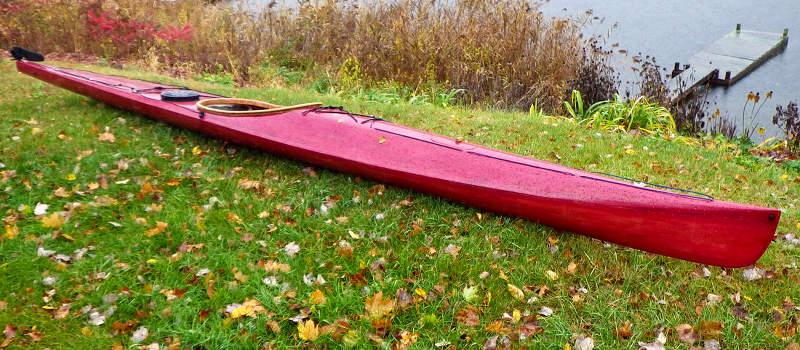





Product Description
The Yukon racing sea kayak is designed for paddling long distances with minimum effort. Nick Schade initially designed the Yukon racing kayak for a customer who wanted to do the Yukon River Quest, a 400+ mile race. On such a long race, staying comfortable over the long haul is more critical than top speed. It is important to move as far as possible with the least amount of effort.
Based on Nick Schade's Bootlegger kayaks, this design is optimised to be as efficient as possible while still being stable and comfortable. Where a longer, narrower boat such as the Mystery will be faster at a sprint, a shorter boat will have a lower wetted surface area which is the source of much of the drag at a fast cruising pace. Like the Mystery, Schade has put a lot of effort and analysis into developing a hull shape that has very low drag at a fast cruising pace.
In a long distance expedition your stroke efficiency will contribute significantly to your overall comfort and endurance. Stroke efficiency starts at the catch: the closer you can place your paddle to the centreline of the kayak, the easier, more relaxed and more efficient your body mechanics will be and that will translate to power and endurance. The fore deck of the Yukon slopes quickly away allowing a close catch in your paddle stroke. With a wing paddle, this translates into the ability to generate a longer lateral motion allowing you to take the greatest advantage of your paddle.
The Yukon kayak's smooth, rounded bottom with a bit of rocker keeps the wetted surface area to a minimum yet due to its width it has enough stability to be comfortable on rough water. The flaring cross-section above the waterline gives secondary stability if you need it. The rocker allows the design to turn easily and a (recommended) rudder will allow you to concentrate on a clean forward stroke without wasting energy on course correction.
There is plenty of volume to carry a good amount of gear but obviously too much weight will cause the kayak to bog down. The high fore deck lifts over waves and easily sheds any that make it up on top. There is a good amount of room for feet and the design can be comfortably paddled with feet together and knees up for an efficient leg drive. The back deck is low and will allow easy layback rolls if required.
The Yukon racing sea kayak is built using the strip-planking method: thin strips of wood are bent around a set of wooden forms side-by-side until the complete hull shape is built up. We recommend Nick Schade's book, The Strip-Built Sea Kayak, which covers the techniques that are used to build strip-planked kayaks.
Plans
The plans and building notes contain sufficient information to make it possible to build the boat from scratch. They include full size drawings for all the forms.







